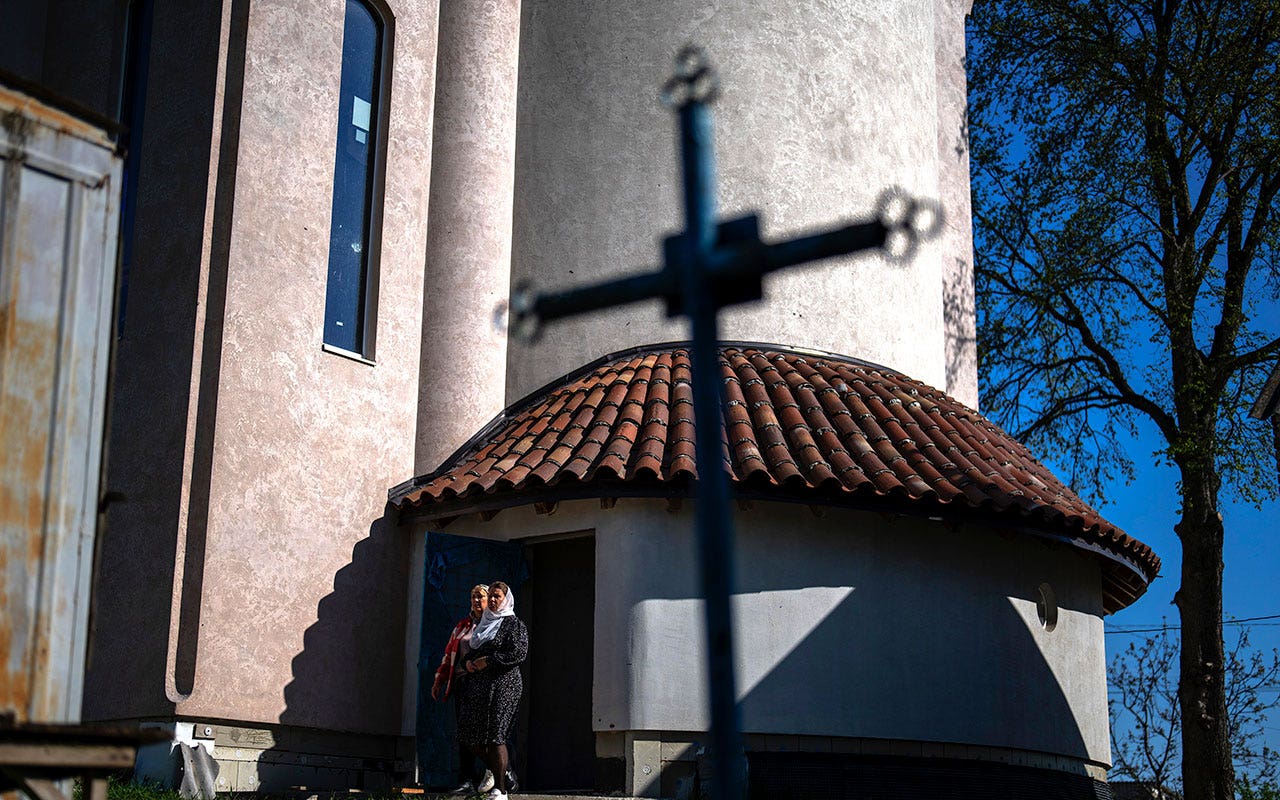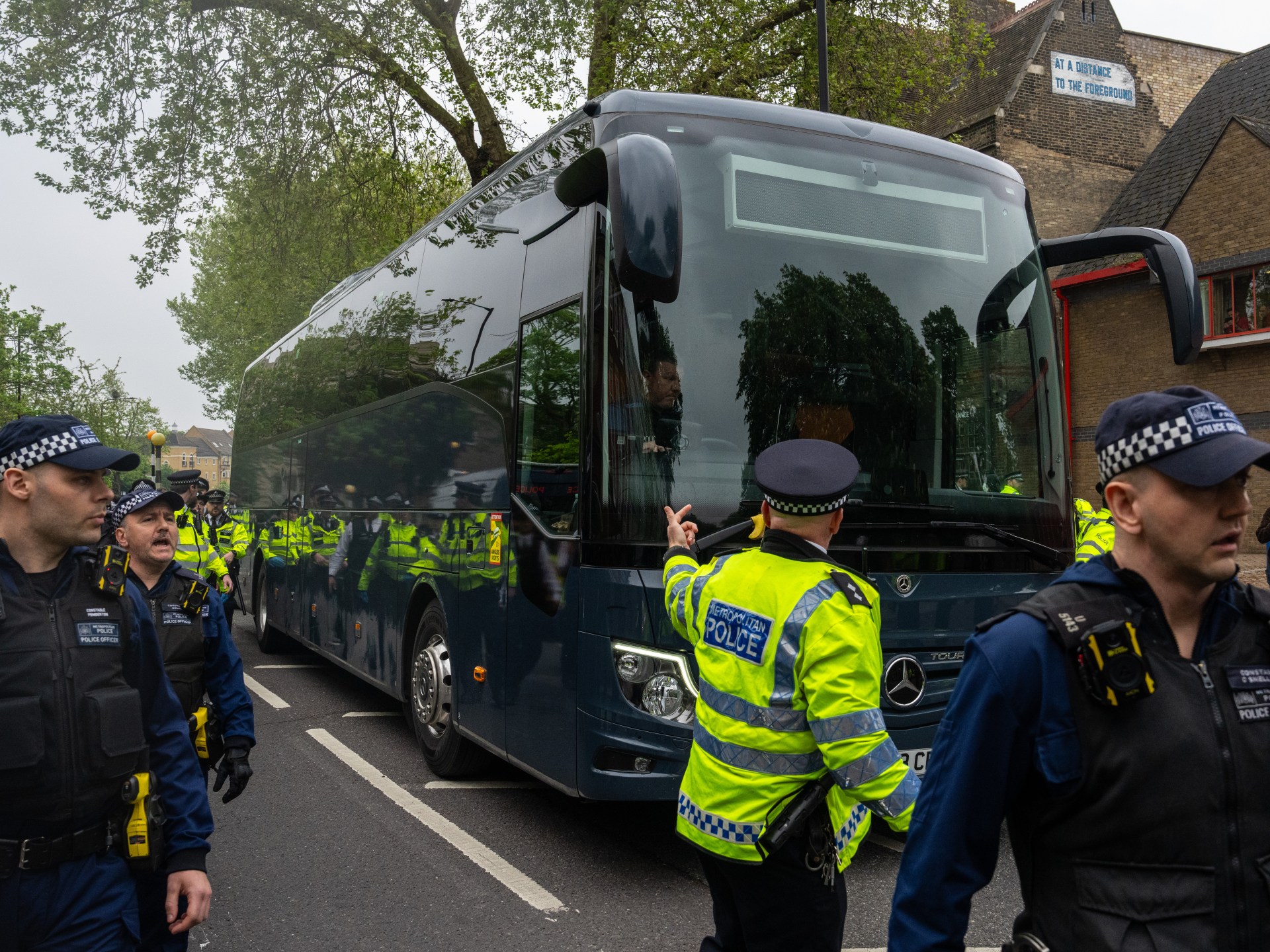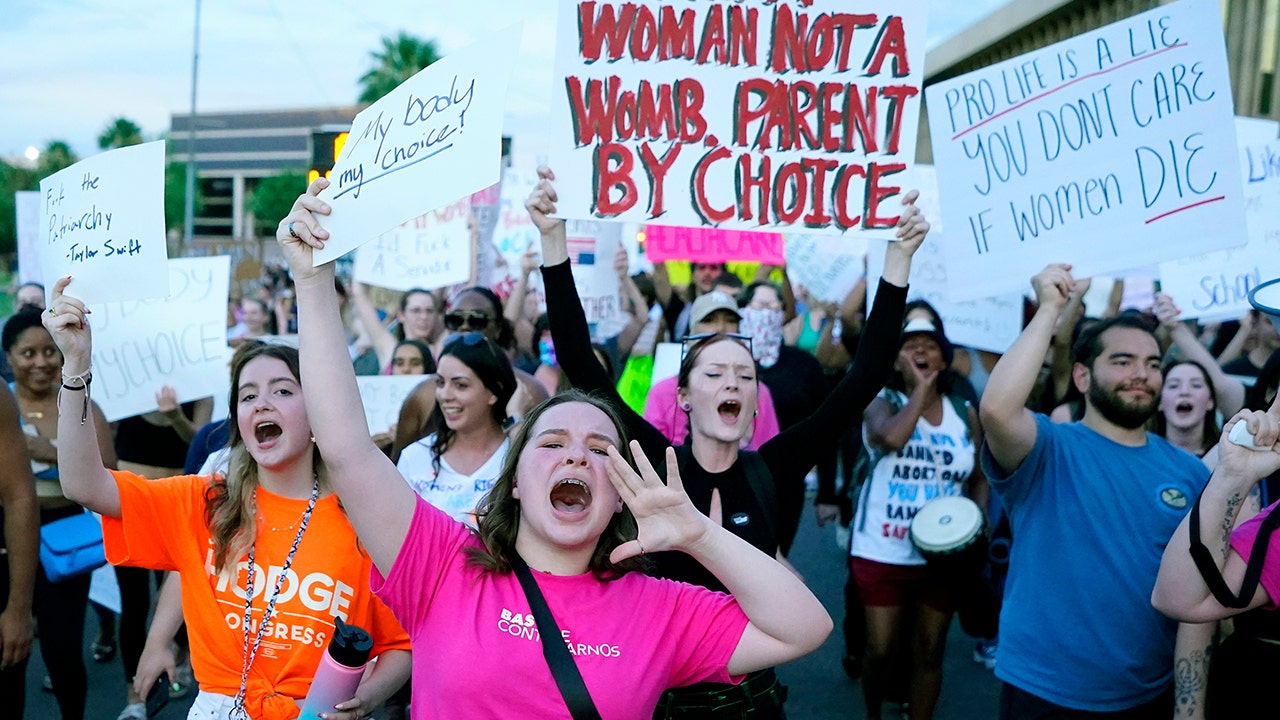Louisiana
“We just don’t have enough water”: Louisiana crawfish farmer on unprecedented drought

Kaplan, La. – For months, Louisiana state has seen their driest season yet and farmers are feeling the brunt.
“This is probably the worst drought we’ve had since the 90’s,” said Kaplan Farmer Christian Richard. “We had cracks in the ground that you can stick your hand all the way to your elbow,” Christian told KATC.
Leading the nation in crawfish production, a widespread drought of this magnitude has several consequences. As the drought continues, areas like Vermilion Parish have seen some of its negative effects.
For sixth generation farmer Christian, little to no rain means high expenses. The low water levels are leading farmers like Christian to pump more waters into his wells to properly irrigate the crops. Christian is pumping on average five times more water into his wells than the previous season causing his electricity bill to rise.
“We have to rely heavily on our deep water wells. Some of these wells ran for 2-3 months straight without stopping. I’ve had two water wells that have quit producing water altogether. So, we’ve had our share of problems with just the wear and tear. We might be putting the equivalent of a normal 4-5 years span of usage on these water wells within a three month period,” Christian said.
According to Louisiana Wildlife and Fisheries, Louisiana’s crawfish industry contributes to more than $300 million of the state’s economy. On average, the crawfish industry supplies 100 to 120 million pounds per year.
With the lack of rain this season, there’s no telling how many crawfish will survive. “The uncertainty is in this year’s upcoming crawfish crop. We don’t know how the crawfish were affected in the ground, we don’t know if they died in the borrows, we don’t know if the ground is too hard for them to come back up, we don’t know if we will have any crawfish at all,” Christian said.
The Richard family are trying to adapt to this new reality. “We just need a good rain to come in and recharge some of the water source for us,” he said.
Christian is hoping for a better season for the generations to come. ““We’re definitely dependent on mother nature quite a bit but you know we do the best we can with what we have and we try to leave the land here for the 7th generation, 8th generation, and the 9th better than what we got it before and that’s we strive to do,” he said.

Louisiana
How Louisiana Is Coping With Flooding In Cemeteries
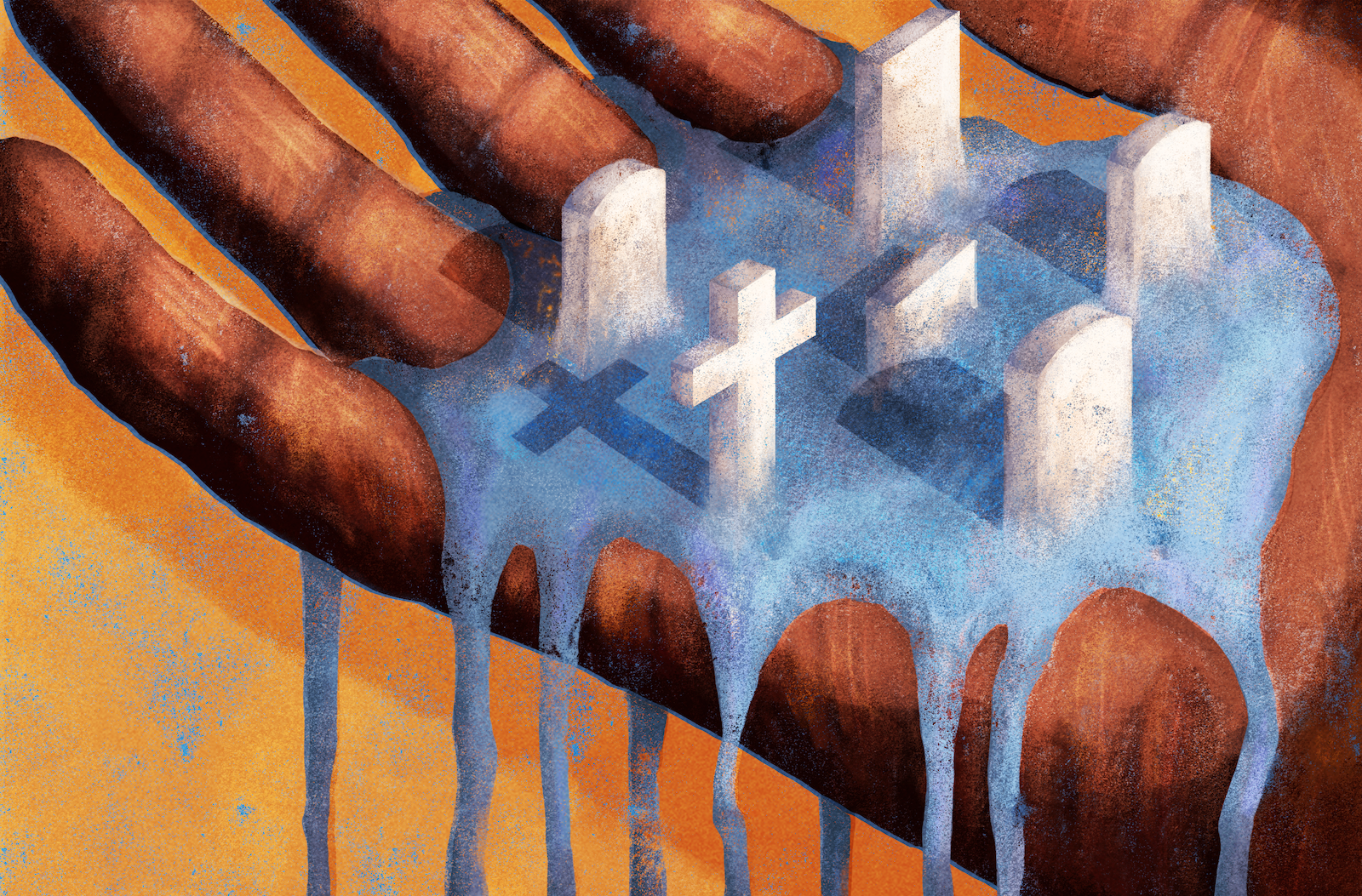

This article is part of The State of Science, a series featuring science stories from public radio stations across the United States. This story, by Eva Tesfaye, was published in collaboration with WWNO.
Emily Dalfrey lives across the street from Niblett’s Bluff Cemetery, where generations of her family are buried, in Vinton, Louisiana.
In 2016, a period of prolonged rainfall caused flooding so severe that people could drive boats over the cemetery. The water put so much pressure on the graves that some of the vaults, which are located near the surface, popped open. Some of Dalfrey’s own family members’ caskets were carried away and deposited in her yard.
Unsure how to restore the cemetery, the community contracted Gulf Coast Forensic Solutions, a company that helps people locate and rebury loved ones after natural disasters damage cemeteries.
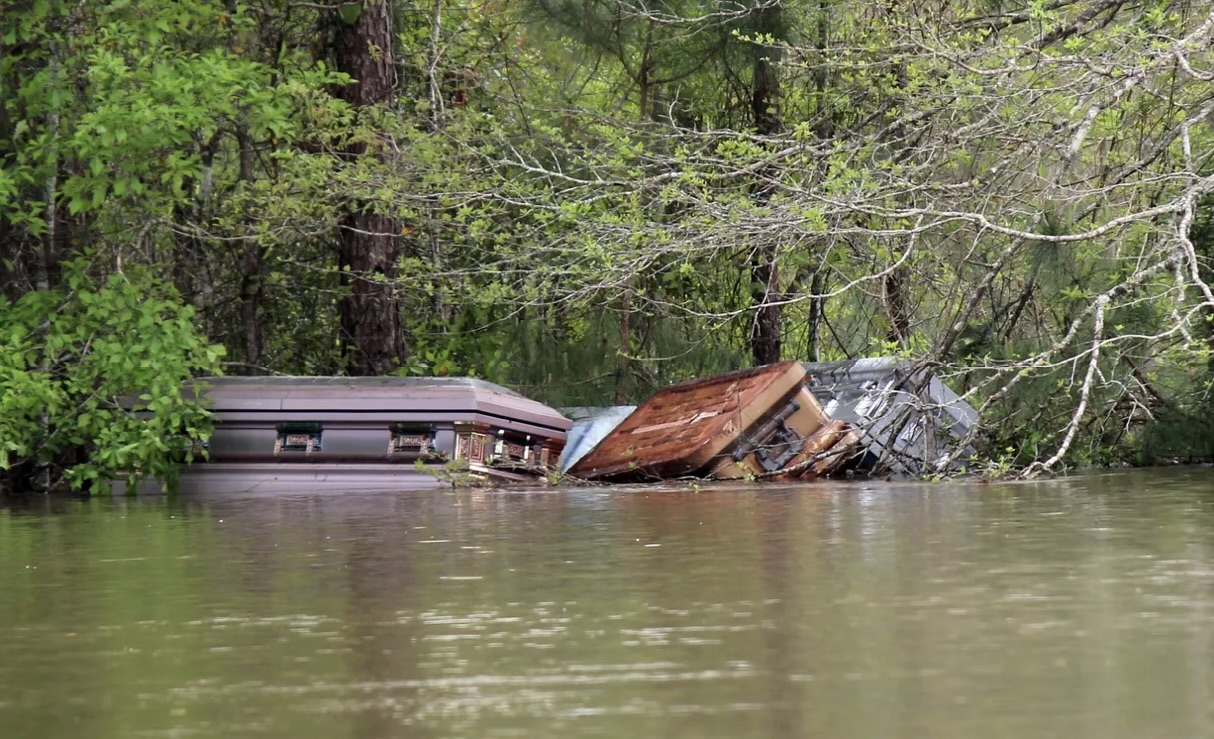
“We truly would have not gotten it done if we would not have had that guidance and that help,” Dalfrey says of Gulf Coast’s assistance. “Because when you bury your family, you think they’re there forever.”
Louisiana has dealt with flooded cemeteries and caskets washing away for decades, but the problem is getting worse—and more widespread. As climate change increases the likelihood of weather-related disasters, many other states are now grappling with damaged cemeteries. And they’re looking to Louisiana for help.
Hurricanes, Flooding, And Mudslides
Charlie Hunter, the CEO of Gulf Coast Forensic Solutions, started in this line of work during his time at the Calcasieu Parish Coroner’s Office, where he worked in death investigation. Normally, such a job involves investigating homicides and car accidents, but Hunter found himself spending a lot of time doing grave site recovery after Hurricane Katrina in 2005.
He started his company in 2020, repairing over 75 cemeteries across Cameron and Calcasieu Parishes in southwest Louisiana after Hurricanes Laura and Delta. He eventually left his job at the coroner’s office and expanded the company in 2023.
“It’s being able to give families a little bit of peace at the end of the day,” he says, “and so I think that’s what’s really important. It’s a never-ending job.”
Working in a state that’s been so frequently pummeled by hurricanes has made him something of an expert in his field.
“Now that cemetery damage and restoration is such a big deal, people reach out to us from all across the country, whether it’s from hurricanes, flooding events, mudslides,” he says.
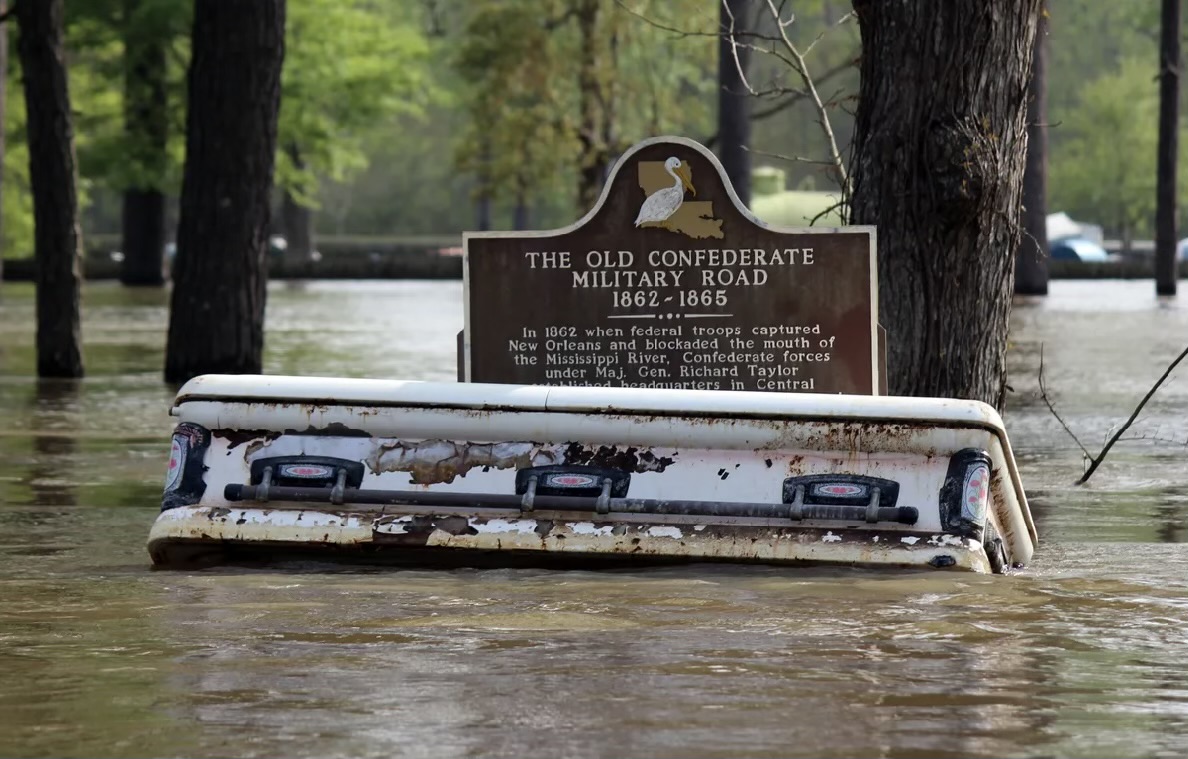
Hunter says he’s helped people in Florida, South Carolina, Tennessee, and even California. One of them was Eva Kenner from Port Charlotte, Florida. She manages Charlotte Harbor Cemetery, the oldest marked cemetery in its county. It was hit by Hurricane Ian in 2022, resulting in 26 fallen trees and close to 100 damaged gravestones.
“I’ve been there 20 years working at the cemetery and we’d never had damaged headstones from a storm before,” Kenner says.
She hired Gulf Coast Forensic Solutions to help repair the cemetery and says the company fixed around 80 headstones in one week—but there’s no getting back those beautiful trees.
“The 26 trees just took away the whole atmosphere. There were great, giant old oaks, hundreds of years old, sun dappled,” she says.
But the repaired headstones have held up, she says, even after other storms have torn through, leaving debris on the ground.
The Louisiana Cemetery Response Task Force
The flooding that damaged Dalfrey’s family members’ graves in 2016 affected more than 800 graves in 74 cemeteries across Louisiana. After that event, the Louisiana Cemetery Response Task Force was created.
“We are the only state that has that,” says Ryan Seidemann, the task force chairman.
The task force is activated when there has been a disaster declaration and reports of cemetery damage. It is currently activated and has been since Hurricane Ida in 2021.
Seidemann says the task force was created to fill a void in federal assistance for cemetery recovery and because in many storm-prone places, there is no one left taking care of cemeteries.
“A lot of folks have moved away over the years. There really weren’t a lot of people to speak for those descendants who had taken off and floated away with the storm surge,” he says.
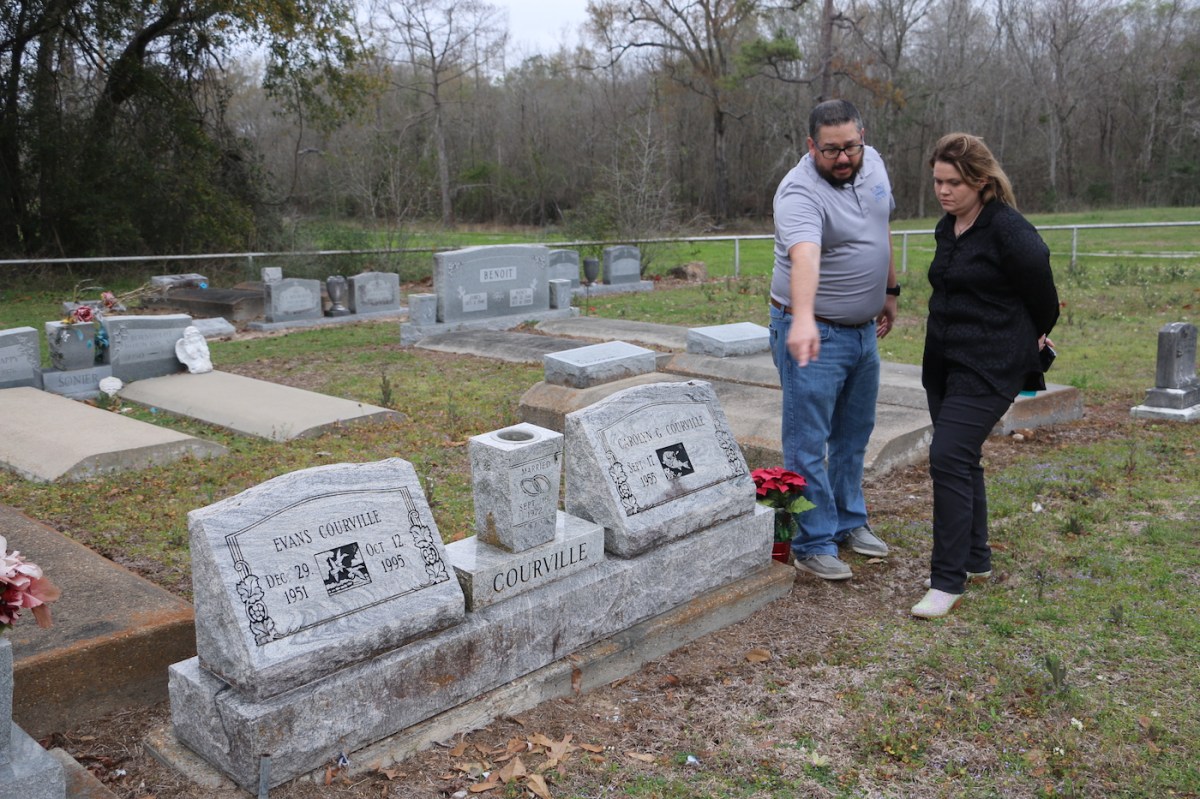
Like Hunter’s company, the task force helps find, recover, and identify lost caskets. Reburial can cost thousands of dollars, but family members of the deceased can receive funding for it through the Federal Emergency Management Agency (FEMA)’s individual assistance program. Because the process of getting that money can be difficult, especially when people are already dealing with fallout from a disaster in other parts of their lives, the task force also helps people apply for it.
And also like Hunter, the task force gets calls from other states where communities find themselves in need of that kind of cemetery restoration expertise—usually along the Atlantic Coast, but sometimes even in the West.
“Oddly, [requests for help have] come from places such as New Mexico, which you wouldn’t think would have flood problems with cemeteries,” says Seidemann, “but apparently as they’ve had wildfire problems and then rainstorms, the undergrowth that is keeping burials in place there is washing off.”
Preparing For Extreme Weather
Climate change is exposing how unprepared cemeteries are for extreme weather events says Jennifer Blanks, a PhD candidate at Texas A&M University who studies cemetery preservation and management.
“Climate change is showing that there actually isn’t really a good protocol or procedure to help with those kinds of issues, in terms of mitigating cemeteries from disasters, and how to recover them afterward,” Blanks says.
That is especially true for Black and other minority cemeteries. In her research, Blanks has found that Black cemeteries in Louisiana have more exposure to flood hazards and proximity to hazardous chemical sites.
“Traditionally, Black residents and non-white people are forced to settle on land that is undesirable for different reasons, whether it cannot produce any type of crop or products, or the value of the land is low because it is in a floodplain,” Blanks says.
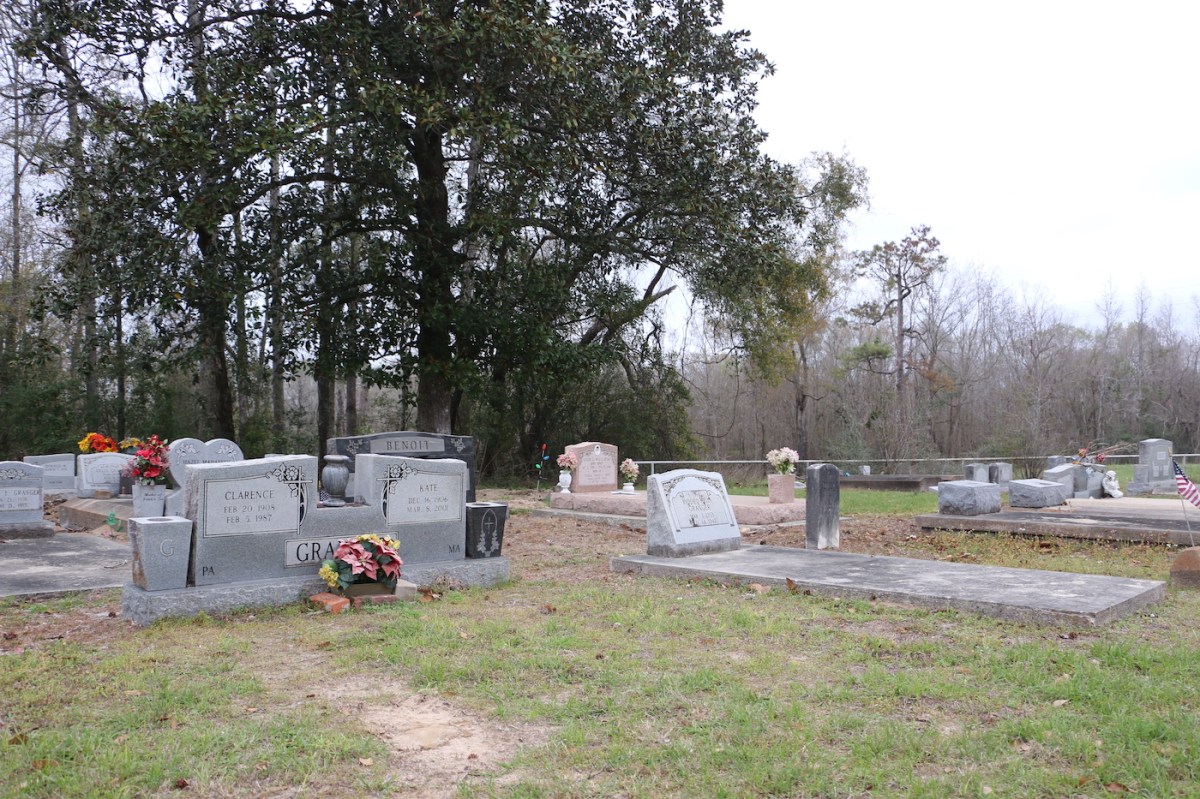
One of the solutions is to bury caskets underground instead of in the surface vaults that are common in Louisiana. Niblett’s Bluff Cemetery now requires that new burials be underground, though there is some debate over whether graves in New Orleans are mostly above ground due to tradition or due to the high water table.
Having good documentation of who is buried where is also extremely important for recovery. If a casket is dislodged and a deceased person cannot be identified, if their next of kin cannot be contacted, or if that person can’t pay, the casket will not get reburied. Hunter says that in those cases his company just tries to get the casket out of public view.
This is exactly what happened in Charlotte Harbor Cemetery in Florida. It could not get FEMA assistance, and Kenner says that finding and contacting relatives of people who had died so long ago would be an impossible task for a cemetery that was established in 1879.
Even in Louisiana—which started to require identification on caskets after Hurricane Katrina—the lack of documentation is still a challenge, Seidemann says.
“Compliance with that has been spotty at best,” he said.
Blanks said those who manage cemeteries should work with the community to gather local knowledge of graves and consider creating maps.
“It’s one thing to protect the physical landscape,” she says, “but it would also be a disservice to not preserve or recover the cultural heritage that is in the landscape itself.”
Further Reading
Louisiana
Louisiana AG sues Biden Admin over new ATF rules on private firearms sales

BATON ROUGE, La. (KALB) – Louisiana Attorney General Liz Murrill announced that she is suing the Biden Administration in a multi-state coalition over what she says is an unlawful ban on private firearm sales.
In the weeks before, the U.S. Department of Justice expanded their rules and regulations, requiring background checks and licenses for any private gun sale.
The Office of the Attorney General claims the restrictions are unconstitutional, intrusive and serve as a direct attack on Louisiana’s right to bear arms.
Murrill released a statement with her lawsuit announcement saying:
“These new rules clearly violate the Second Amendment. The Biden Administration continues to recklessly attack our constitutional rights. Louisiana will challenge them every step of the way.”
Click here to report a typo. Please provide the title of the article in your email.
Copyright 2024 KALB. All rights reserved.
Louisiana
Election chaos in Louisiana as only state without a congressional map for fall ballot
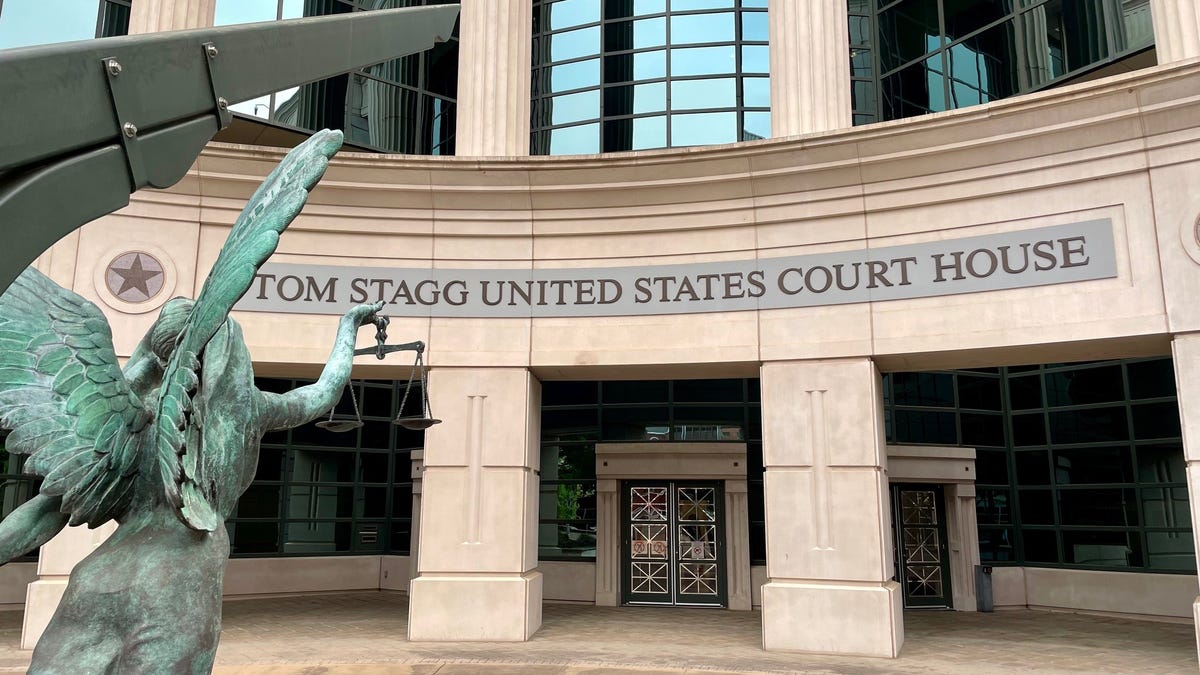
A federal court panel’s divided decision to throw out Louisiana’s congressional boundaries has left the state without a map to hold the Nov. 5 election and less than two weeks to produce one before the state’s chief elections officer’s deadline to conduct a fall ballot.
The three-judge panel issued a 2-1 decision Tuesday ruling Louisiana’s congressional map creating a second Black majority district was unconstitutional because of “an impermissible racial gerrymander,” siding with the plantiffs who sued to block the boundaries.
U.S. Western District Judges Robert Summerhays and David Joseph, both nominated by President Trump, sided with the plaintiffs. Fifth Circuit Court of Appeals Judge Carl Stewart, nominated by President Bill Clinton, dissented.
The court has scheduled a status conference at 10:30 a.m. May 6 to discuss what’s next for the state and intervenors who defended the map and the plaintiffs who successfully challenged it.
Louisiana Attorney General Liz Murrill told USA Today Network Thursday she expects to file a motion with the panel by Friday to permit the state to implement the rejected map pending an appeal of its verdict to the U.S. Supreme Court.
Meanwhile, the NAACP Legal Defense Fund, a group of Black voters and other civic organizations have already filed a notice of appeal with the U.S. Supreme Court asking it to allow the rejected map to remain in place as an emergency remedy for the 2024 election until a new map can clear the courts.
The NAACP Legal Defense fund will also enter Monday’s hearing with its own preferred map that would create a second majority Black district.
“We will continue fighting on all fronts for a map that has two majority Black district as a matter of fair and constitutional representation as we have been for the past two years,” NAACP Legal Defense Fund attorney Jared Evans told USA Today Network.
Evans said he doesn’t believe two weeks is enough time for the panel or Louisiana Legislature to craft a new map, which is why the intervenors have asked the Supreme Court to allow the rejected map to be implemented for the 2024 elections only.
“Louisiana is the only state that doesn’t have a congressional map,” he said. “This is an emergency.”
But Paul Hurd, an attorney with the plaintiffs who will likely have their own map to submit, dismissed those concerns.
“With the technology we have today we can draw a map in 4 hours,” Hurd said. “We can definitely deliver an answer by (Louisiana Secretary of State Nancy Landry’s) May 15 deadline.
“I think we’re right on schedule, but we’ll find out Monday. If the court asks for proposals I’m sure we’ll have one.”
The federal panel could also commission what’s known as a special master to draw a new map it finds acceptable.
At stake are the political careers of the incumbents and scope of representation for the state’s Black voters.
The plaintiffs successfully challenged the map by attacking the new majority Black 6th Congressional District boundaries stretching from Baton Rouge to Lafayette to Alexandria to Shreveport as unconstitutional, arguing they they didn’t meet traditional redistriction principles like compactness and preserving communities of interests.
The state contended additional factors drove the map, including the politics of protecting powerful incumbent Louisiana Republicans U.S. House Speaker Mike Johnson (4th District), Majority Leader Steve Scalise (1st District) and Julia Letlow (5th District), a member of the Appropriations Committee that controls the country’s pursestrings.
Doing so put Republican U.S. Rep. Graves, the current 6th District congressman, in peril by dismantling his boundaries in favor of a majority Black voter population.
The lawsuit was just the latest litigation challenging the state’s ever-shifting congressional boundaries since the 2020 U.S. census.
Late last year a federal appeals court signaled it would uphold Baton Rouge Middle District Judge Shelly Dick’s earlier ruling requiring Louisiana’s previous congressional map be redrawn to include a second majority Black district out of six to comply with the Voting Rights Act.
The Republican-dominated Legislature complied and new GOP Gov. Jeff Landry signed into law the newest map in January, only to have it thrown out this week by the three-judge panel after a three-day trial in Shreveport in early April.
More: Federal judges throw out Louisiana congressional map with second Black District
Greg Hilburn covers state politics for the USA TODAY Network of Louisiana. Follow him on Twitter @GregHilburn1.
-

 News1 week ago
News1 week agoLarry Webb’s deathbed confession solves 2000 cold case murder of Susan and Natasha Carter, 10, whose remains were found hours after he died
-

 World1 week ago
World1 week agoHaiti Prime Minister Ariel Henry resigns, transitional council takes power
-

 News1 week ago
News1 week agoFirst cargo ship passes through new channel since Baltimore bridge collapse
-

 World1 week ago
World1 week agoUS secretly sent long-range ATACMS weapons to Ukraine
-

 World1 week ago
World1 week agoSpanish PM Pedro Sanchez suspends public duties to 'reflect'
-

 News1 week ago
News1 week agoAmerican Airlines passenger alleges discrimination over use of first-class restroom
-

 Movie Reviews1 week ago
Movie Reviews1 week agoHumane (2024) – Movie Review
-

 Education1 week ago
Education1 week agoVideo: Johnson Condemns Pro-Palestinian Protests at Columbia University
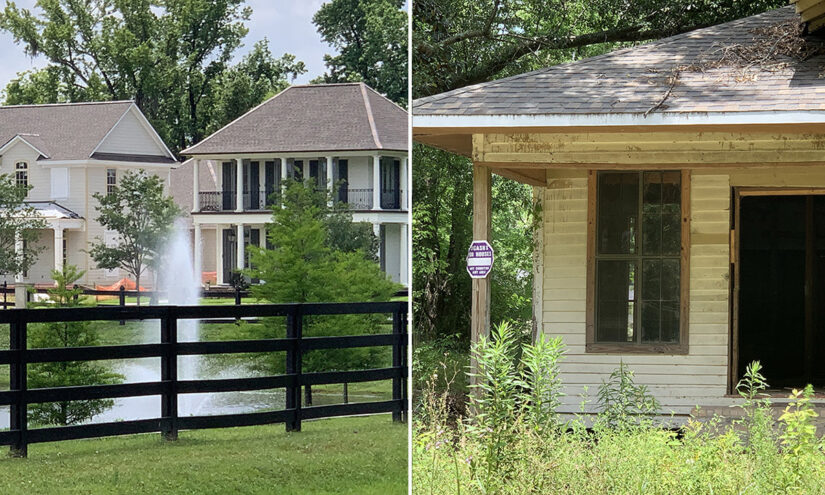
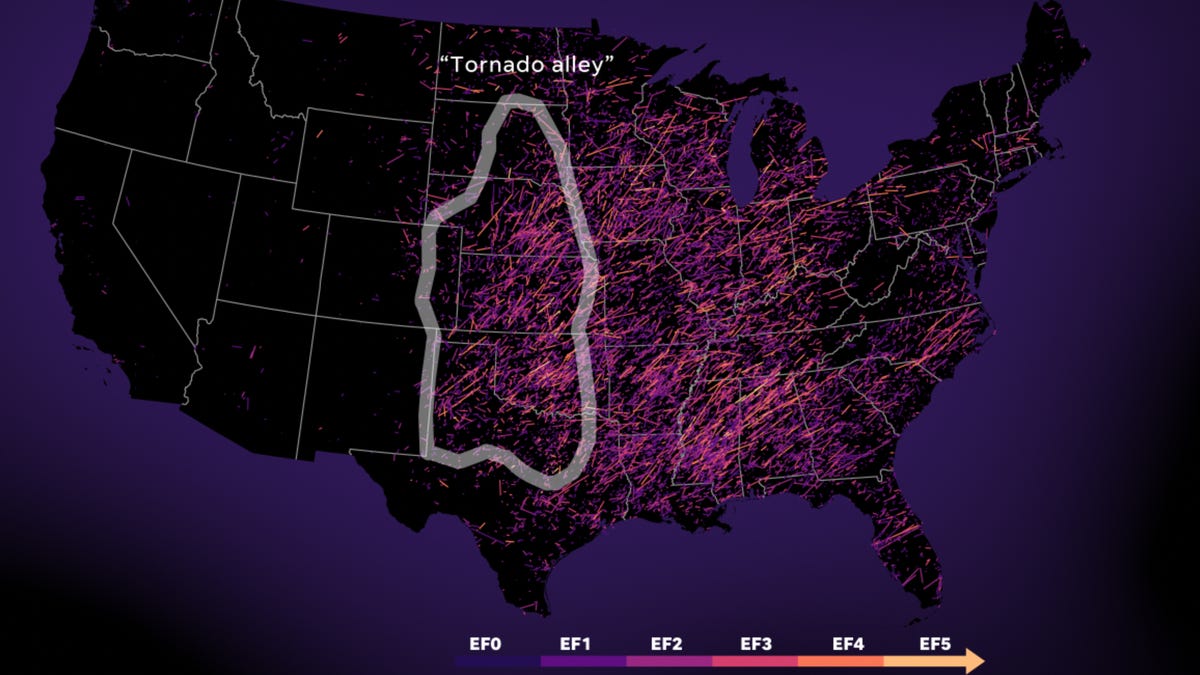
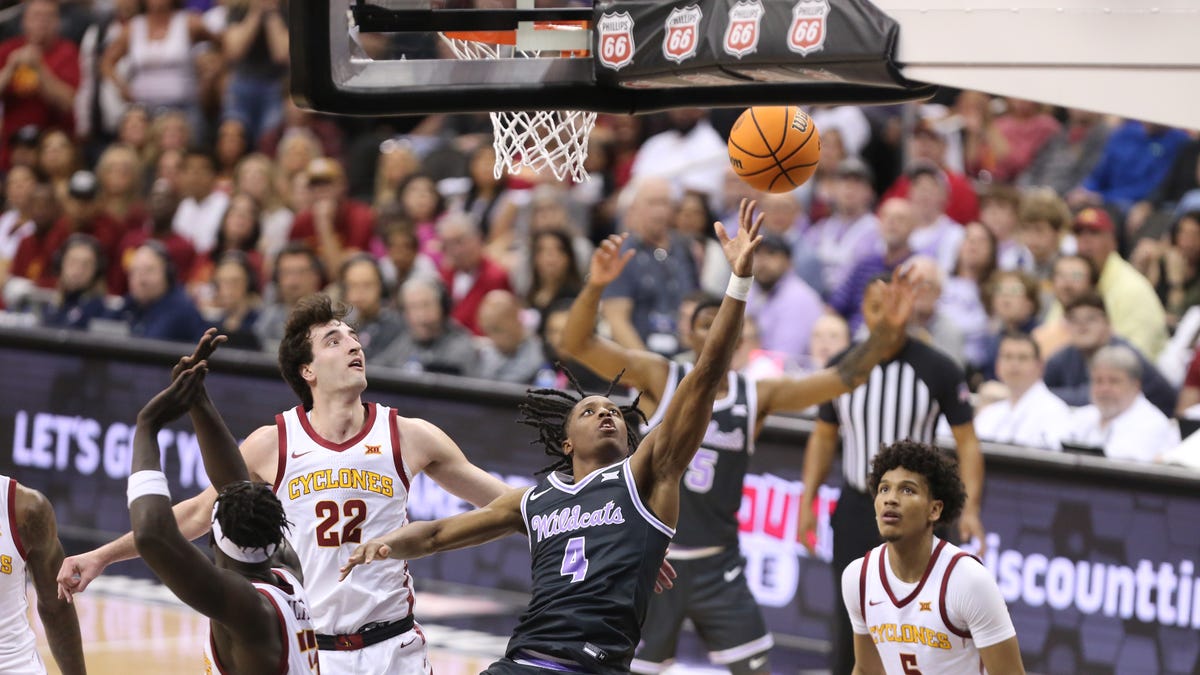
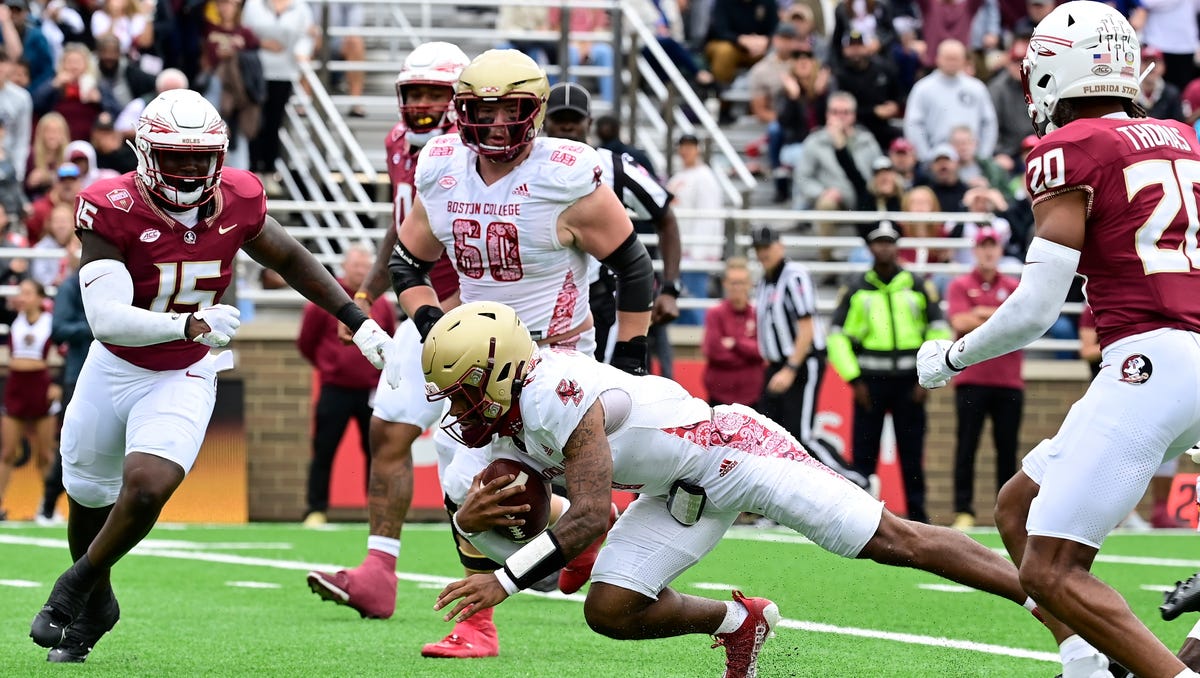


/cdn.vox-cdn.com/uploads/chorus_asset/file/25416369/STK473_NET_NEUTRALITY_CVIRGINIA_A.jpg)
